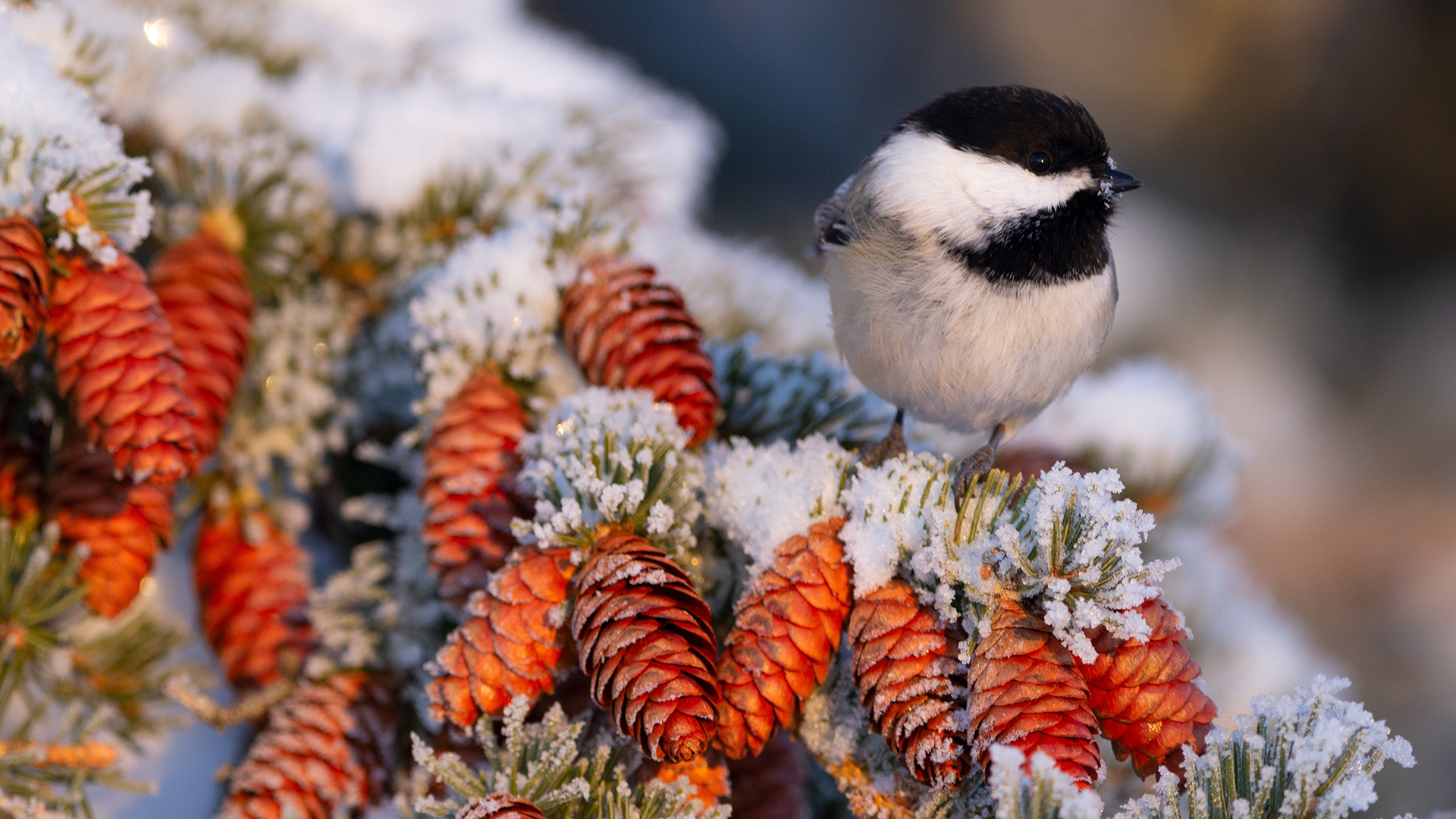Chickadees might be tiny, but they’re absolutely bursting with personality, charm, and a whole bundle of fascinating quirks that make them way cooler than your average backyard bird.
Their fluffy round bodies are absolutely cute, and their black caps? So incredibly adorable! These feathered wonders are full of surprises, though! Beyond their charming appearance, chickadees are survival experts, master communicators, and some of the most resourceful birds in the animal kingdom!
They’re the kind of bird you’ll want to keep an eye (and ear) out for every time you step outside. So, let’s dive beak-first into the wild and wonderful world of chickadees with mind-blowing facts that prove these birds are as extraordinary as they are adorable!
1. Chickadees Are Tiny But Tough
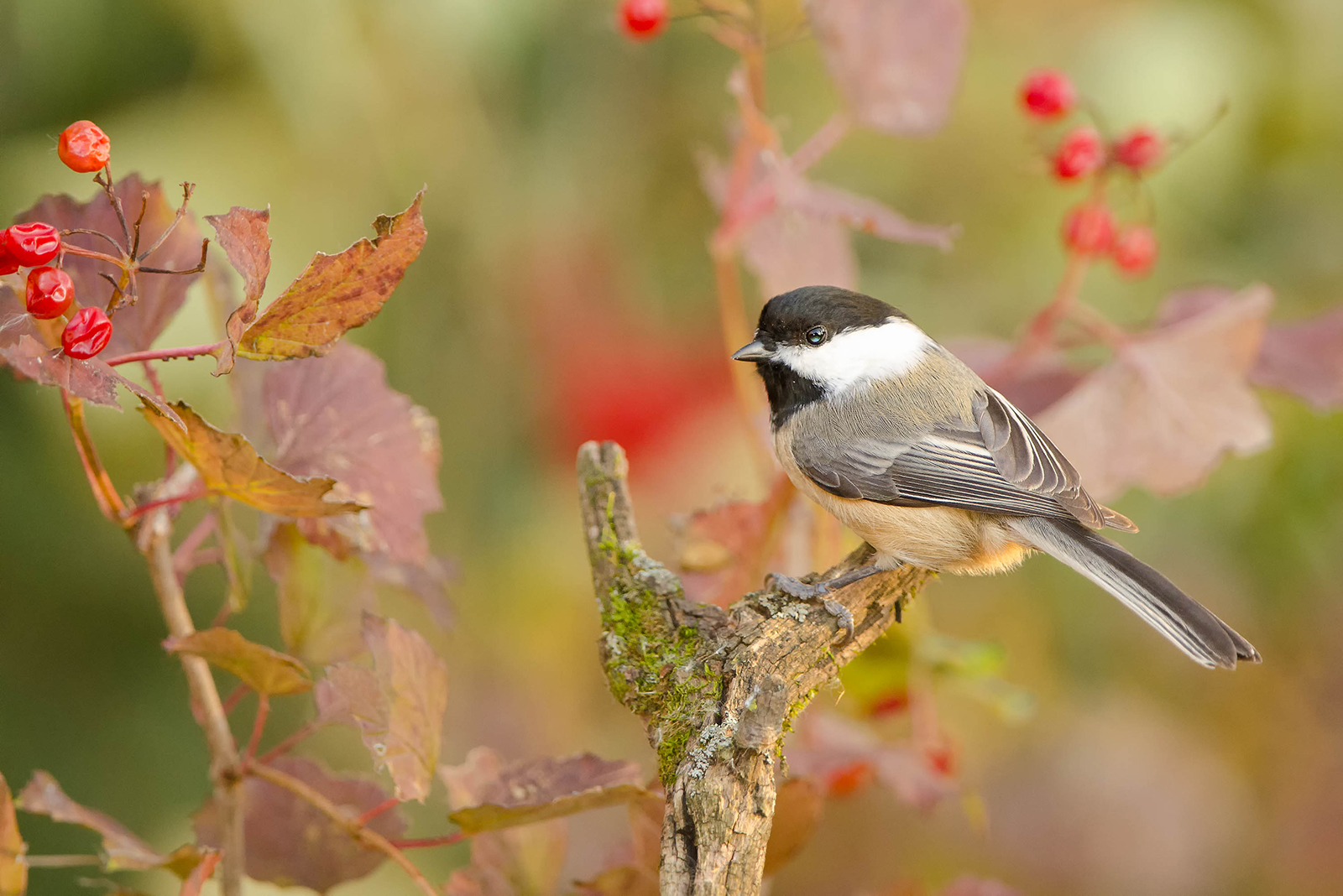
Don’t let their small size fool you – chickadees are absolute champions of winter survival! These feathered dynamos, weighing less than half an ounce (that’s lighter than a single AA battery!), face some of the harshest weather conditions with impressive resilience.
While many birds migrate south when temperatures plummet, chickadees stay put, toughing it out through icy storms and freezing nights. How do they do it? They have a fascinating superpower called regulated hypothermia, where they lower their body temperature by up to 20°F overnight to conserve precious energy.
It’s like their own natural power-saving mode! During the day, they stay active, constantly foraging for food to fuel their tiny bodies, proving that even the smallest birds can be mighty winter warriors.
2. They Remember Thousands Of Hiding Spots
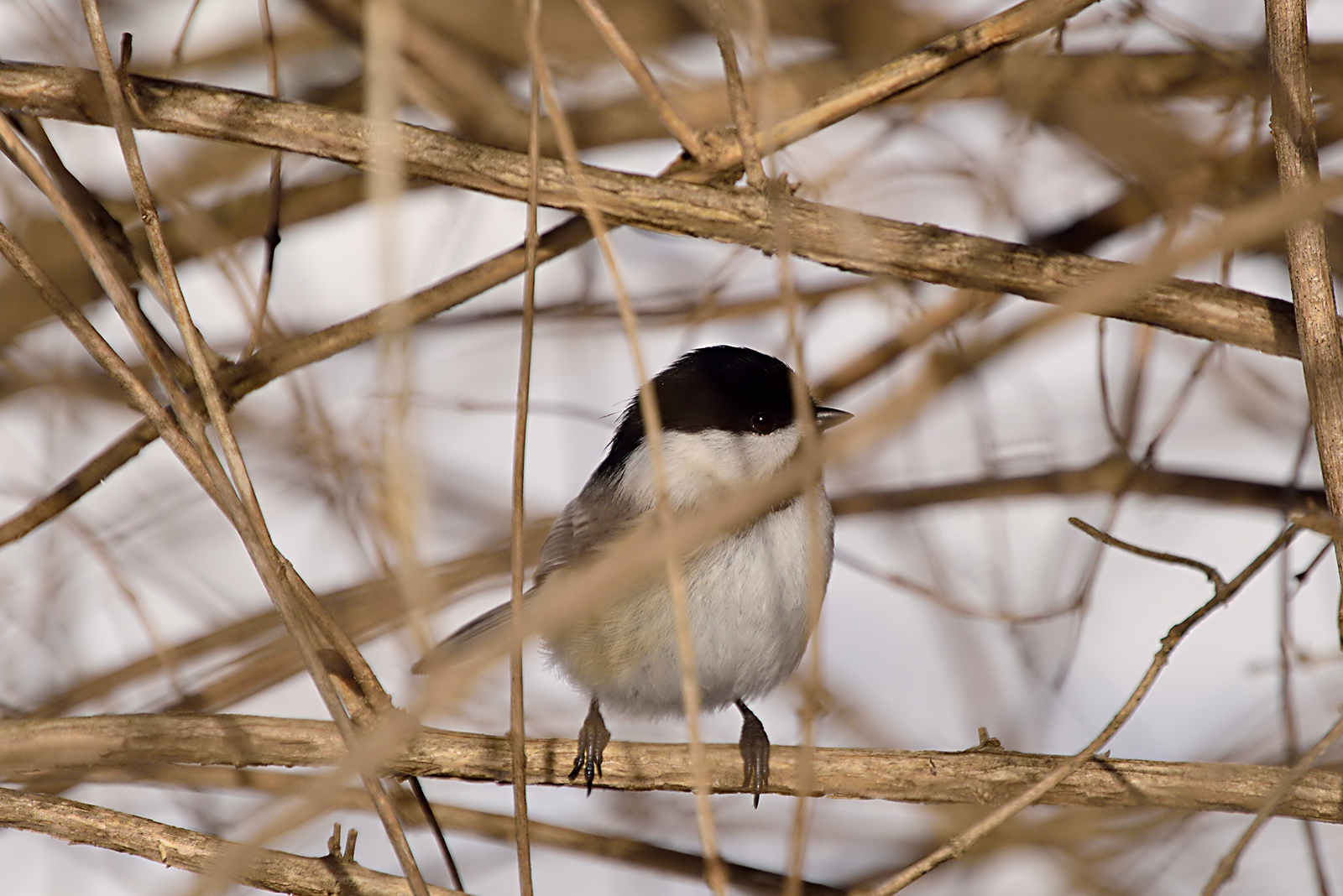
Think you’ve got an impressive memory? Chickadees would give you a serious challenge! These tiny geniuses spend the fall stashing food (like seeds, nuts, and even insects) all over their territory in a super-organized natural pantry system.
We’re talking bark crevices, under leaves, tucked into moss, and even hidden behind bits of loose tree bark. But here’s the jaw-dropper: they can remember thousands of these hiding spots long after they’ve filled them, even months later when winter hits hard.
How do they pull off this memory magic? Their brains actually change size with the seasons! Yes, really! The hippocampus, the part of the brain responsible for memory, expands during winter when their memory needs to be sharpest.
When food becomes more abundant in spring and they don’t need to rely on hidden caches as much, their brain shrinks back down. Imagine having a brain that adapts to your needs like a living hard drive. Nature’s pretty wild, huh?
3. Their Call Is More Than Just A Song
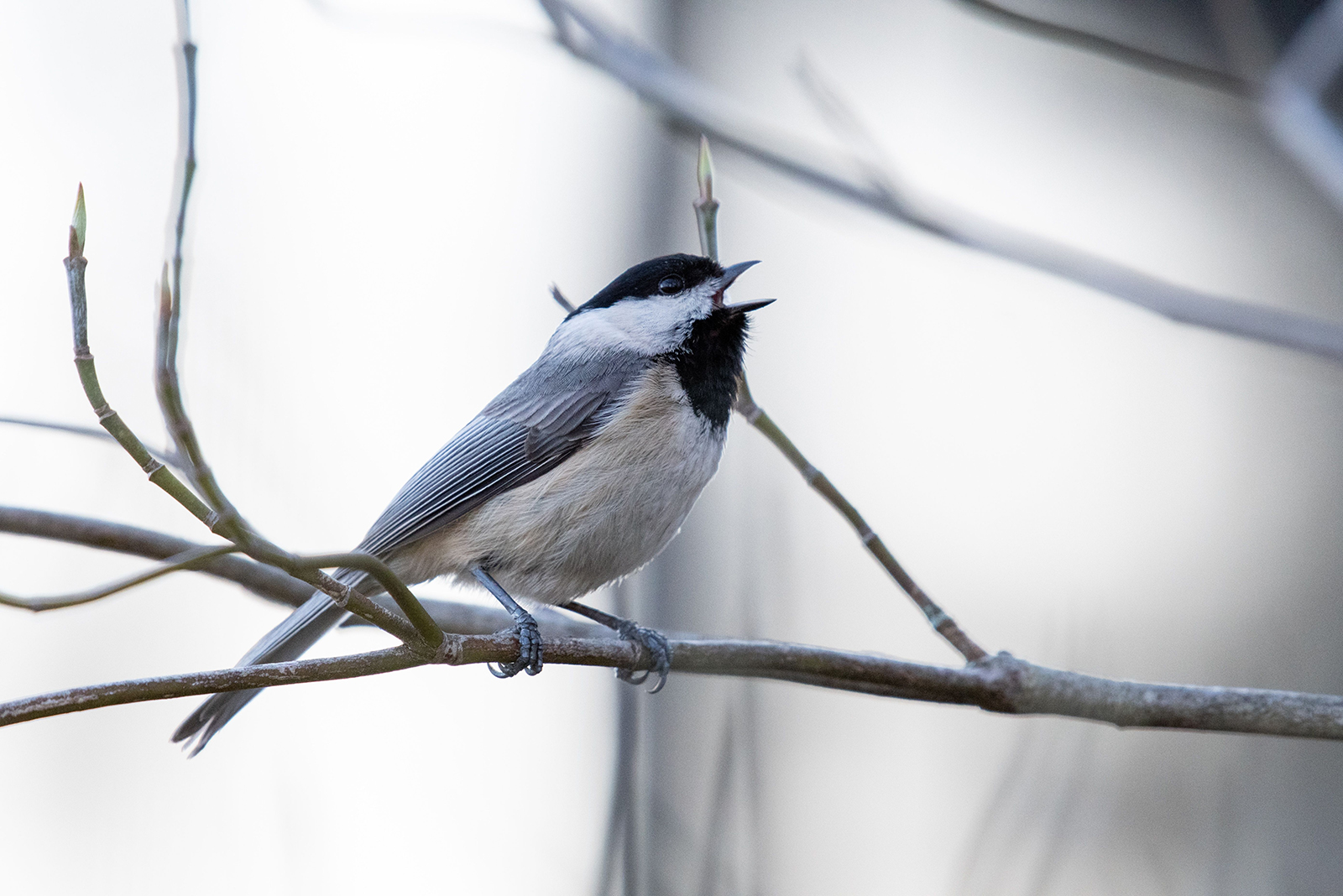
That iconic “chick-a-dee-dee-dee” call you’ve probably heard in your backyard? It’s not just a cute little song! It’s actually a sophisticated messaging system! Chickadees have turned their signature call into a complex language that works as both a social tool and a danger warning.
The number of “dee” notes they add to the end of the call isn’t random either. It’s a built-in alarm code. More “dee” notes mean a bigger threat nearby. So, if you hear a chickadee going full-on “chick-a-dee-dee-dee-dee-dee!” you might want to check for a predator like a hawk or even a snake lurking nearby.
They also use soft contact calls to keep track of their flockmates while foraging. It’s basically nature’s walkie-talkie system, helping them stay connected and safe while working as a team. Who knew such a small bird could have such a big vocabulary?
4. Chickadees Are Super Social
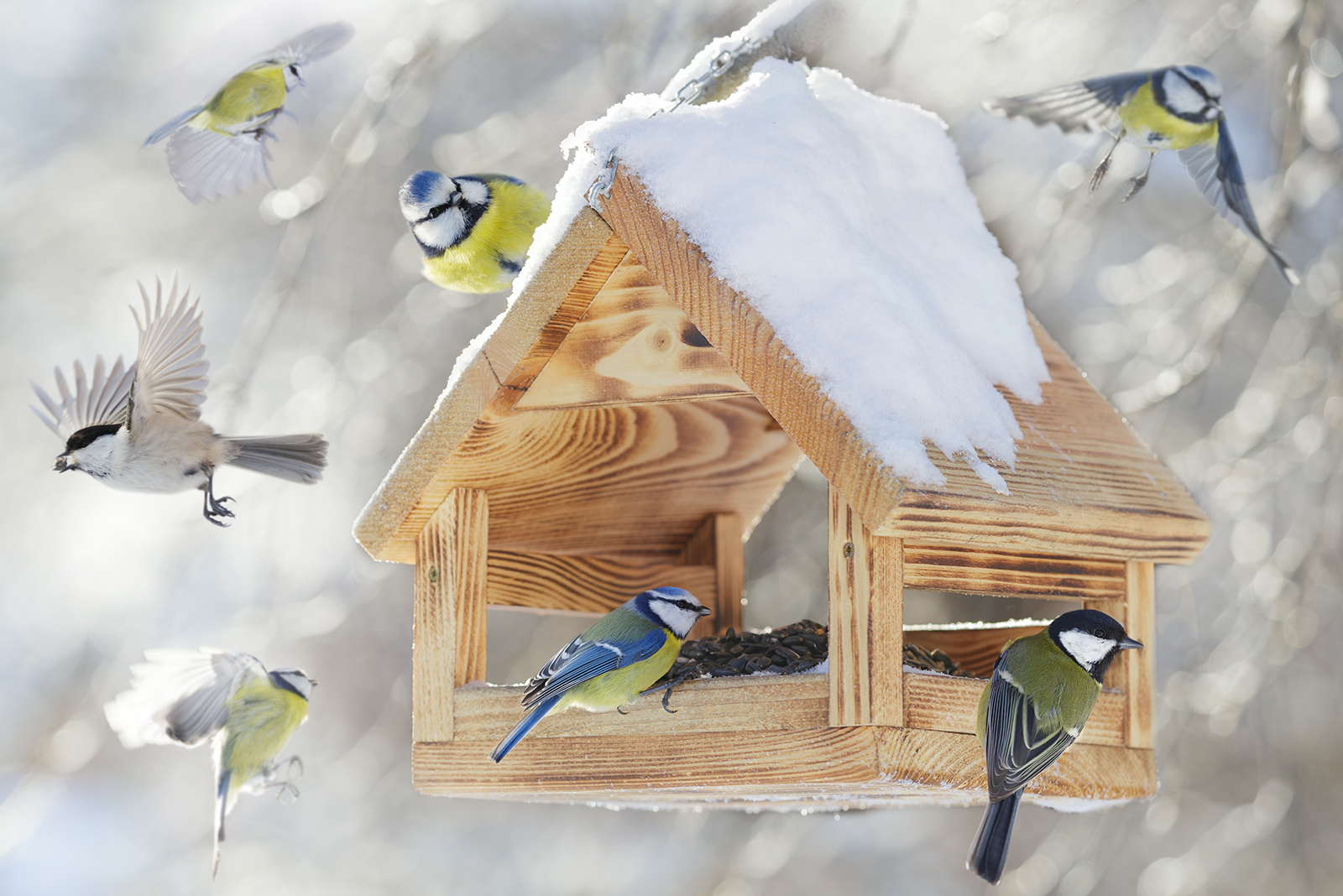
These chatty little birds are the ultimate social butterflies. Well, birds! Chickadees love to hang out in mixed flocks, often teaming up with species like nuthatches, titmice, and woodpeckers.
Why the squad goals? It’s all about teamwork! More birds mean extra eyes watching for predators and extra brains helping locate food sources during tough winter months. Plus, mixed flocks benefit from the chickadees’ famous alarm calls. When danger’s near, chickadees sound the alert, and everyone in the flock listens! It’s like having a built-in security system in your bird group.
They even have a loose pecking order, with dominant chickadees often calling the shots in their flocks. So next time you see a bunch of birds flocking together, know that chickadees might just be the masterminds behind the gathering!
5. They Can Nest In The Tiniest Spaces
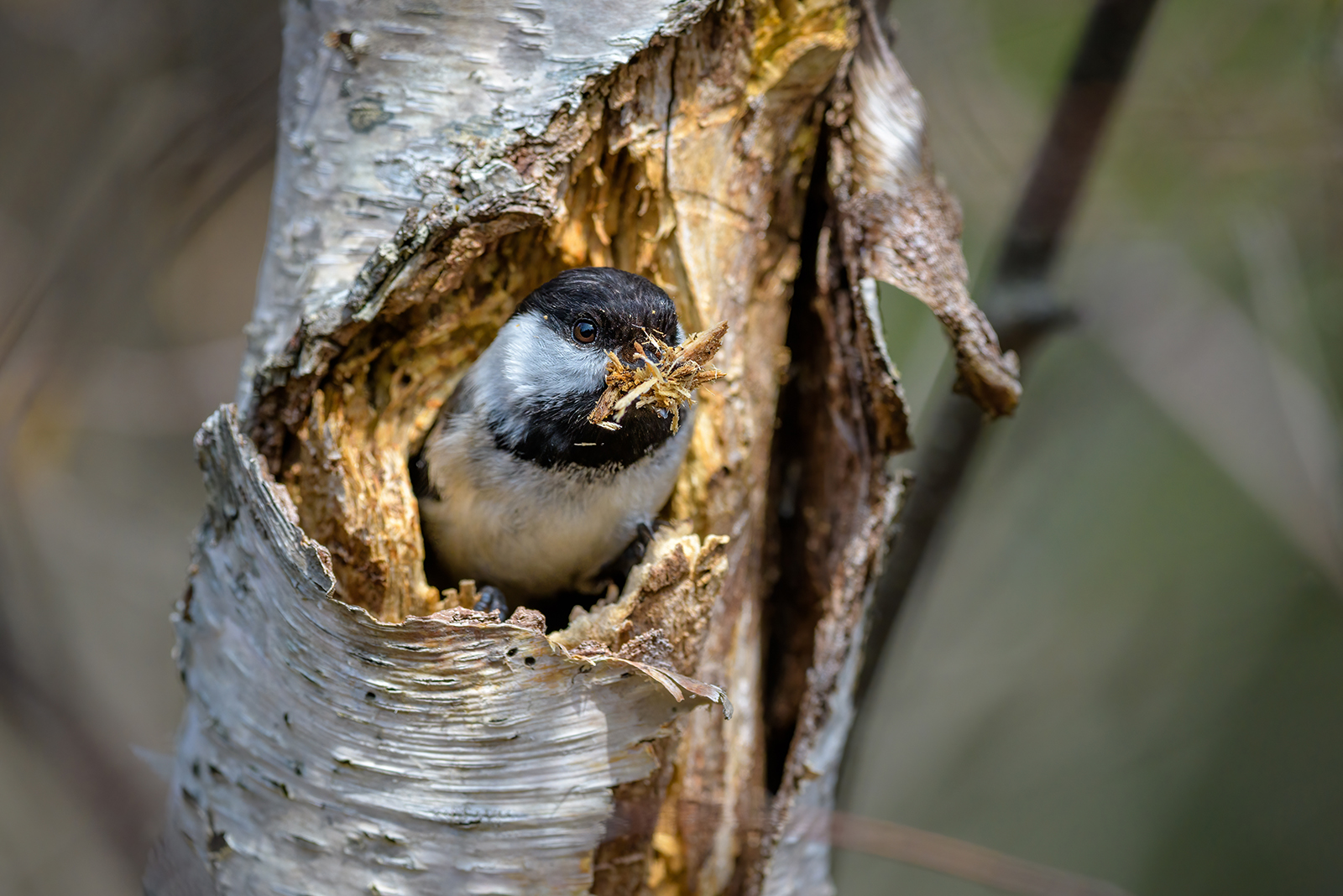
Chickadees are the true DIY champions of the bird world when it comes to nesting. These resourceful little architects prefer small cavities in trees, but they’ll also make do with old woodpecker holes, hollowed-out stumps, and even human-made birdhouses if they find one cozy enough.
What’s even more impressive? Chickadees don’t just settle for pre-made spaces! They’re known to excavate their own nesting sites in soft, rotting wood when no ready-made options are available.
They line their nests with soft materials like moss, animal fur, and feathers to create a cozy, insulated spot perfect for their tiny eggs. And get this: if they feel their nest has been discovered by a predator, they’ve even been observed abandoning it and starting over somewhere safer.
Talk about dedicated parents! If you want to invite these feathered builders into your yard, consider installing a chickadee-friendly nest box to give them a safe, creative space to raise their next generation of fluffballs.
6. Chickadees Fluff Up To Stay Warm
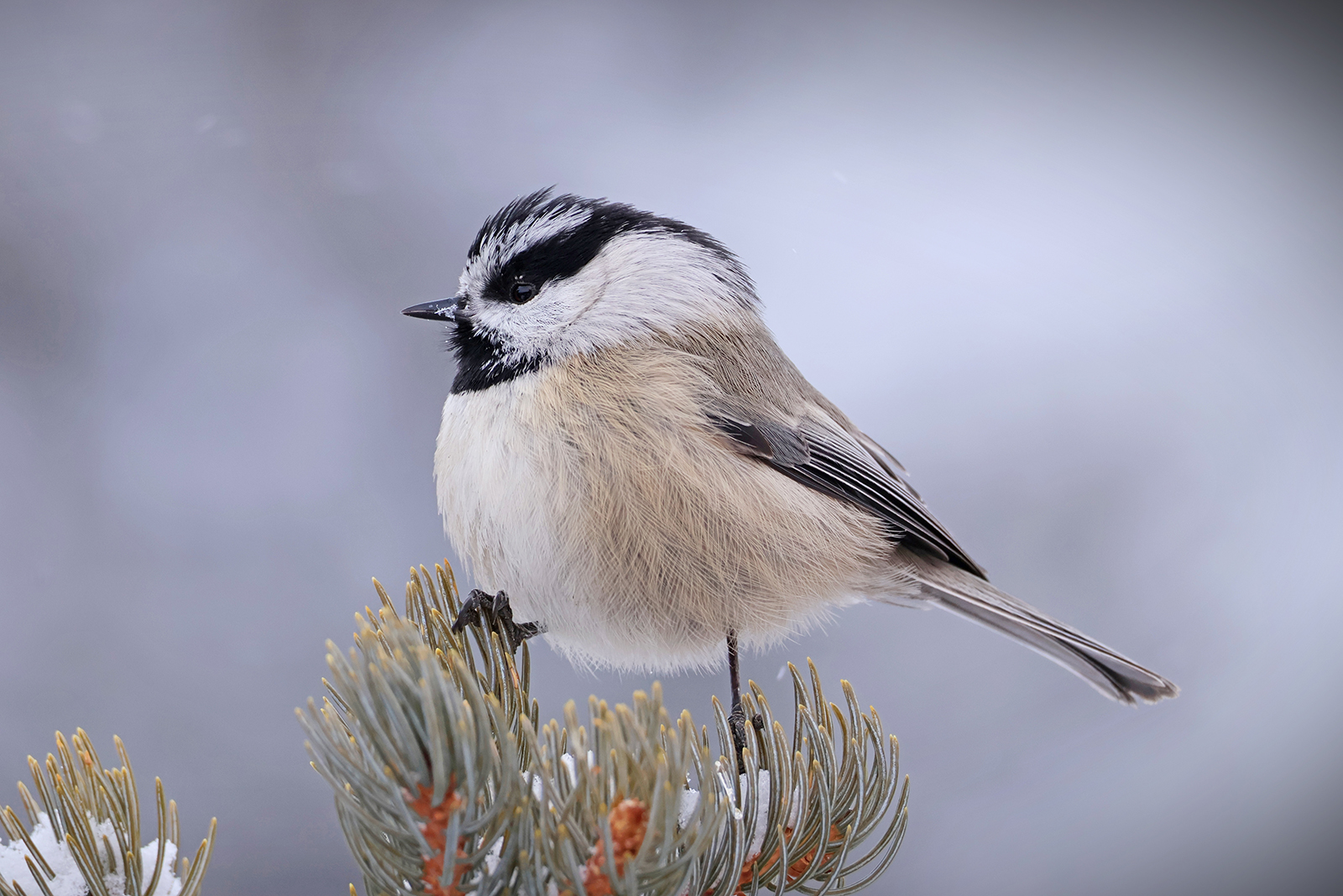
Ever noticed a chickadee looking extra round and fluffy on a chilly winter day? That puffed-up appearance is a survival tactic straight from nature’s playbook!
When temperatures drop, chickadees fluff up their feathers to trap warm air close to their bodies, creating an insulating layer of warmth, much like wearing a super effective down jacket. Their dense feathers overlap in layers, locking in heat and keeping the cold air out.
This clever feather-fluffing technique helps chickadees brave some of the harshest winter weather with surprising success. But the cuteness doesn’t stop there!
Chickadees can control how much they puff up depending on the cold. On frigid nights, they become even fluffier, transforming into tiny feathered snowballs determined to survive the freeze.
7. They Have A Built-In Anti-Freeze System
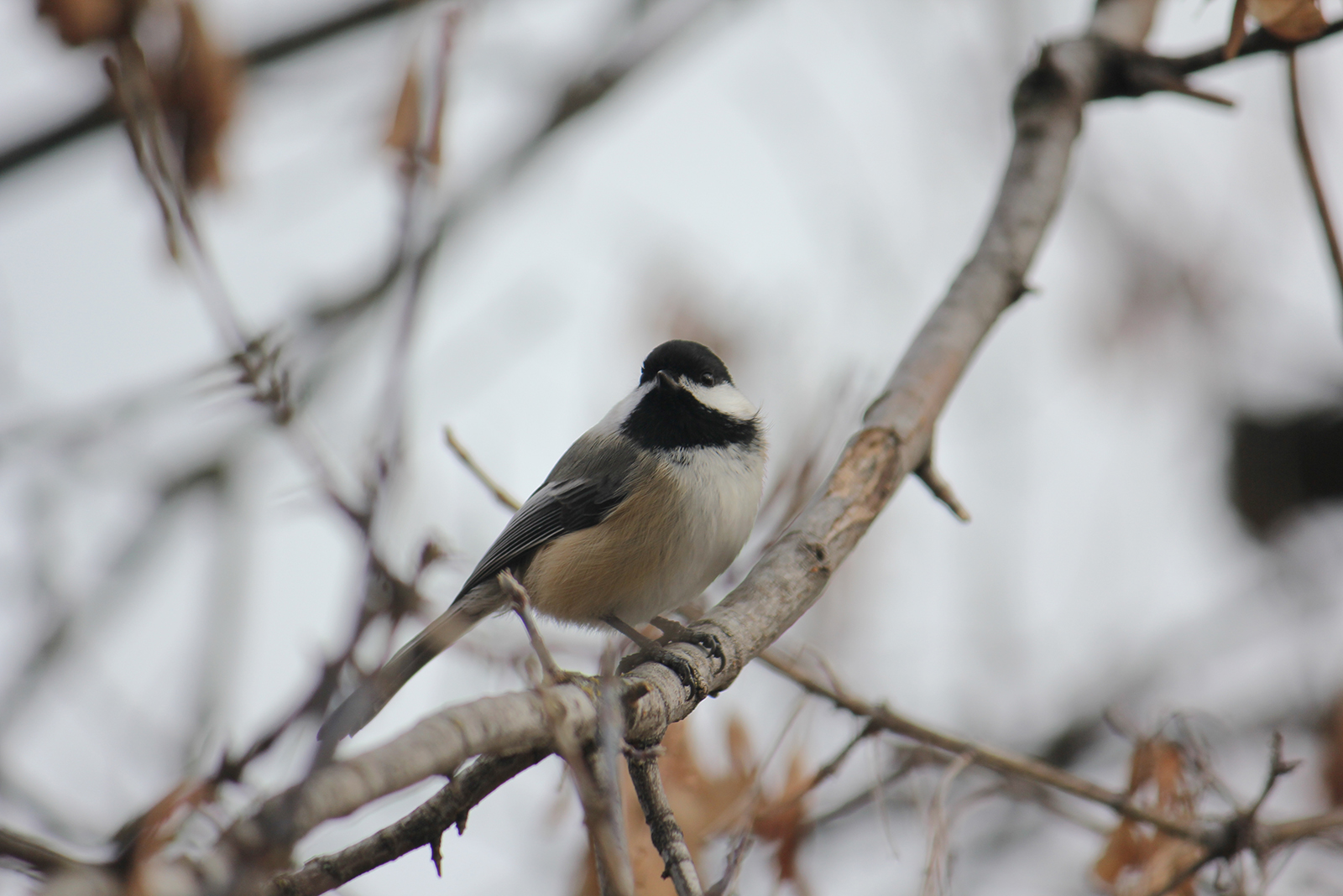
When temperatures take a nosedive, chickadees rely on more than just their fluffy feathers to stay warm – they have a built-in metabolic superpower!
These tiny birds burn fat so efficiently that their bodies become miniature heat factories during the coldest months. Throughout the day, they’re constantly foraging for high-fat foods like seeds and suet to fuel their relentless energy needs.
When night falls, their metabolism kicks into overdrive, burning those fat stores to generate internal heat, keeping their tiny bodies warm while the world freezes around them.
Think of it as nature’s version of a space heater packed into a bird barely heavier than a few paper clips! This fat-burning system is so effective that chickadees can survive in sub-zero temperatures!
8. Chickadees Are Curious By Nature
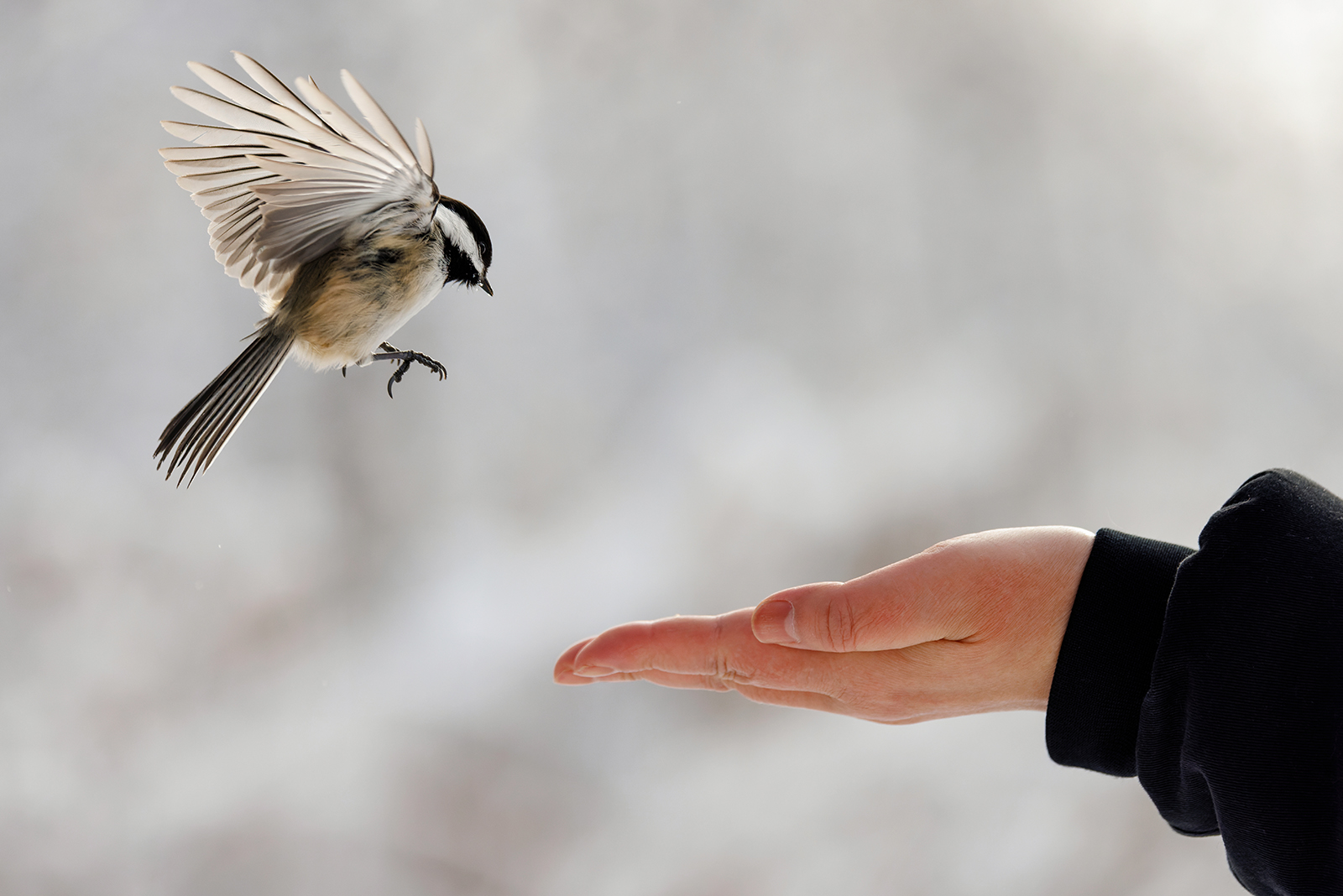
These little daredevils have curiosity written all over their tiny, round faces! Chickadees are famously bold, often being the first birds to explore new feeders or investigate human activity in their territory.
Unlike many shy birds that dart away at the first sign of movement, chickadees will often flit closer, tilting their heads as if they’re sizing you up for a conversation. Their inquisitive nature even means they’re known to land on outstretched hands to grab seeds, especially in winter when food is scarce.
It’s not just food that draws them in, though! Scientists believe chickadees’ bold behavior helps them learn about their environment and assess threats, making them incredibly adaptable.
If you’re patient and have some black oil sunflower seeds on hand, you might just make a tiny, feathered friend next time you’re out for a walk!
9. They Change Their Feathers Annually
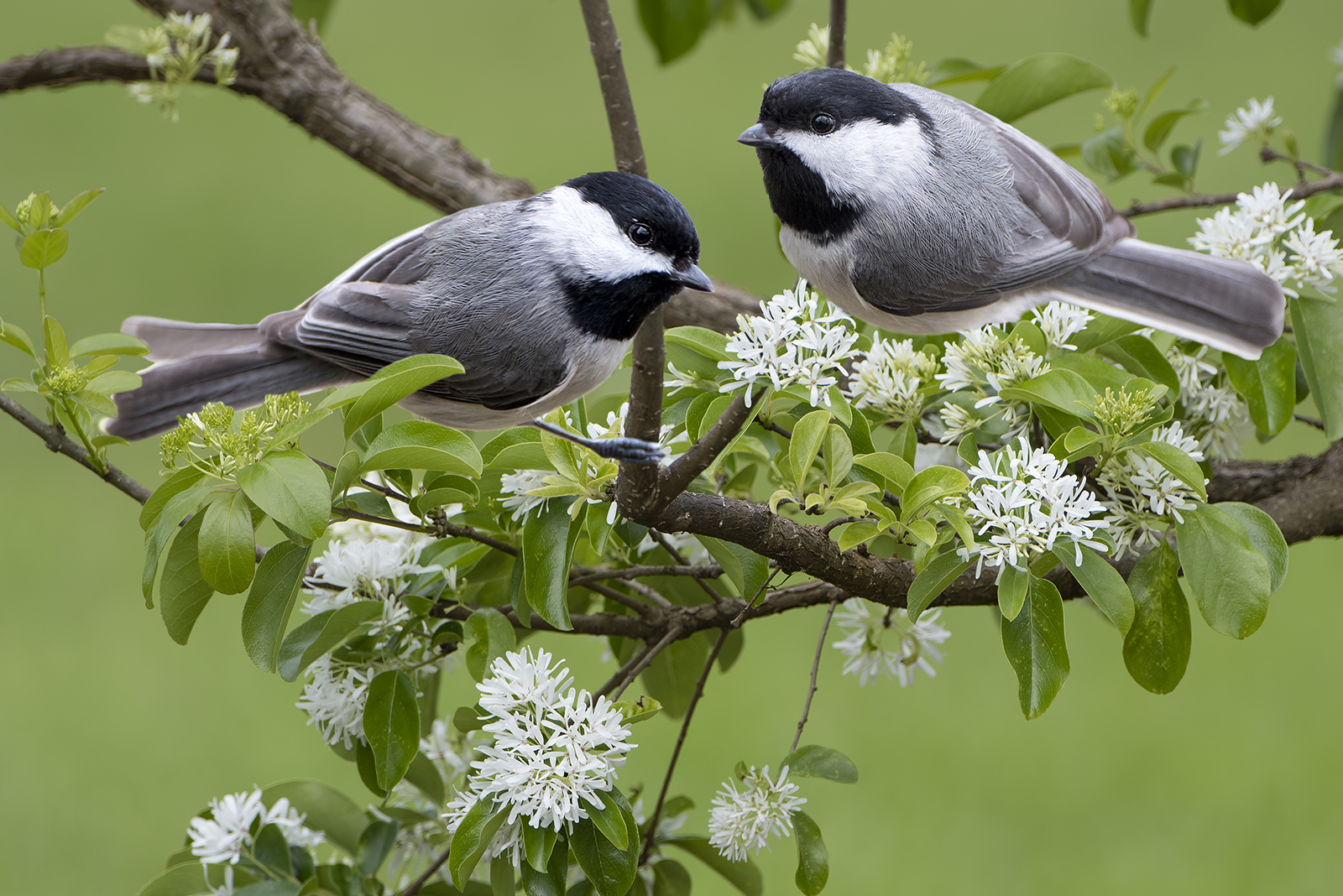
Chickadees may be small, but they know the importance of staying stylish and functional. Every year, these birds go through a full feather makeover in a process called molting, where they shed their old, worn-out feathers and grow a fresh set.
Feathers wear down over time, losing their insulating power and becoming less effective at keeping the chill out during harsh winters. By molting each summer, chickadees ensure they’re fully prepped for the colder months ahead!
The process is gradual, so they’re never left flightless or vulnerable while they’re changing into their fresh set of feathers. Think of it like swapping out a worn winter coat for a brand new, ultra-warm jacket. Fashionable and practical, all in one!
10. Chickadees Are Nature’s Pest Control
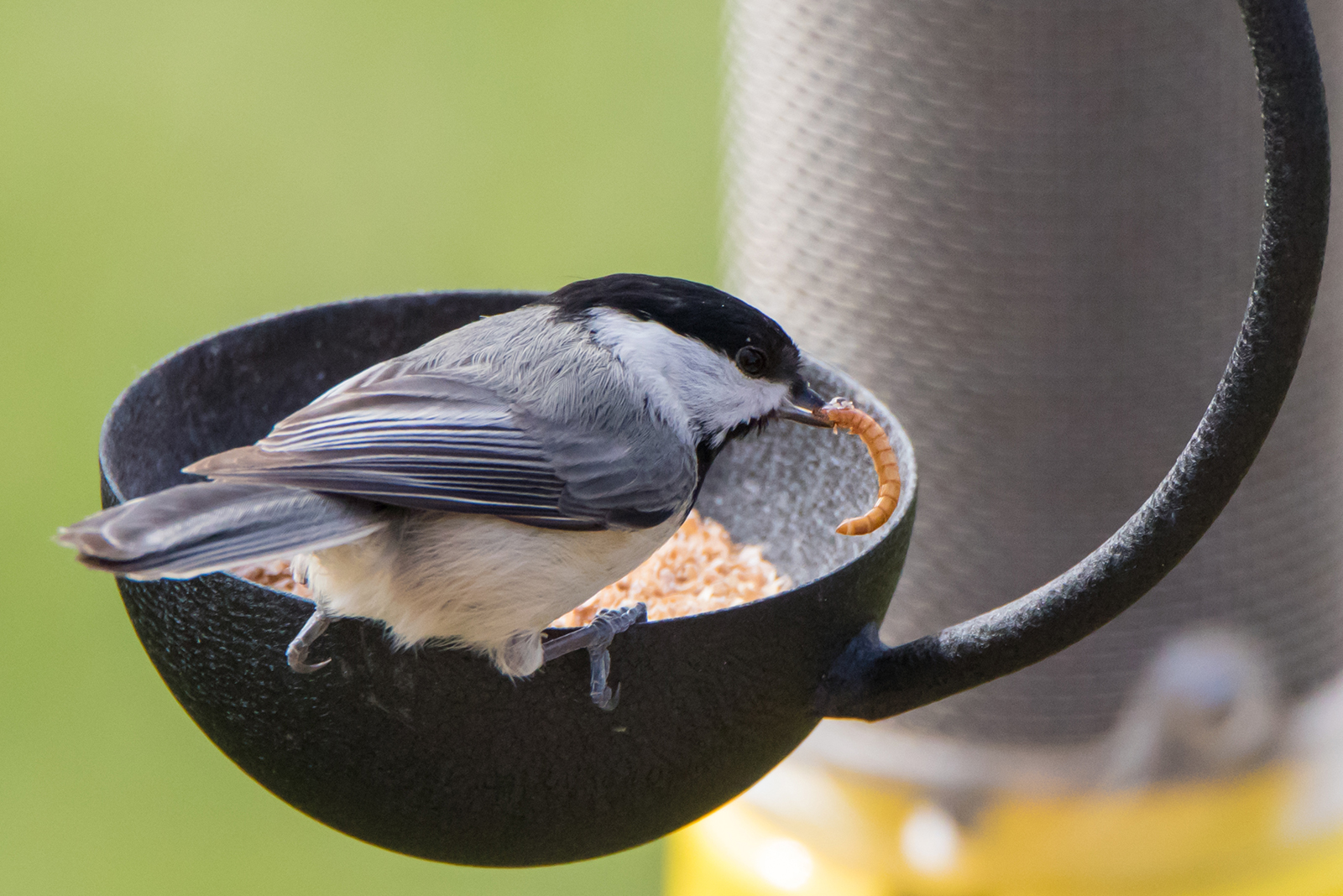
Gardeners, get ready to celebrate! Chickadees are nature’s ultimate pest control professionals, working tirelessly to keep your garden healthy and bug-free. These tiny feathered superheroes have a serious appetite for insects, and trust me, they feast!
During the warmer months, chickadees devour insects, larvae, and eggs, including common garden pests like aphids, caterpillars, and beetles. They can eat hundreds of insects a day, which means less damage to your plants and fewer pests to worry about.
Even better? They’re doing all this work without the need for harmful chemicals or pesticides, making them the perfect eco-friendly backyard allies. Want to attract more of these natural exterminators?
Set up a few bird feeders and plant native shrubs! They’ll repay you by keeping your garden healthier and more balanced, all while adding charm with their cheerful songs!

